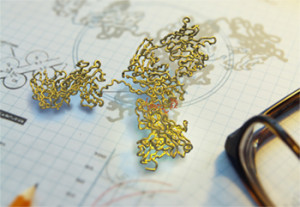The Antibody Society is pleased to be affiliated with mAbs, a multi-disciplinary journal dedicated to advancing the art and science of antibody research and development. We hope you enjoy these summaries based on the abstracts of the most read papers published in a recent issue.
All the articles are open access; PDFs can be freely downloaded by following the links below.
Issue 11.8 (Nov/Dec 2019)
In this new Perspective, Dumet et al., present the results from their study of the patent landscape of IgG4 Fc engineering, i.e., patents claiming modifications in the heavy chain. Thirty-seven relevant patent families were identified, comprising hundreds of IgG4 Fc variants focusing on removal of residual effector functions (since IgG4s bind to FcγRI and weakly to other FcγRs), half-life enhancement and IgG4 stability. Given the number of expired or soon to expire major patents in those 3 areas, companies developing blocking antibodies now have, or will in the near future, access to free tools to design silenced, half-life extended and stable IgG4 antibodies.
Parola et al. describe an antibody engineering and screening approach where complete variable light (VL) and heavy (VH) chain cassette libraries are stably integrated into the genome of hybridoma cells by enhanced Cas9-driven homology-directed repair (HDR), resulting in their surface display and secretion. By developing an improved HDR donor format that utilizes in situ linearization, they were able to achieve >15-fold improvement of genomic integration, resulting in a screening workflow that only requires a simple plasmid electroporation. This proved suitable for different applications in antibody discovery and engineering. By integrating and screening an immune library obtained from the variable gene repertoire of an immunized mouse, they isolated a diverse panel of >40 unique antigen-binding variants. They also successfully performed affinity maturation by directed evolution screening of an antibody library based on random mutagenesis, leading to the isolation of several clones with affinities in the picomolar range.
In this new Report, Sustmann et al. present a generic approach to generate two novel IgG-derived antibody formats that are based on a modification of the CrossMab technology. MoAbs harbor two heavy chains (HCs) resulting in one binding entity and one Fc, whereas DuoMabs are composed of four HCs harboring two binding entities and two Fc regions linked at a disulfide-bridged hinge. The latter bivalent format is characterized by avidity-enhanced target cell binding while simultaneously increasing the ‘Fc-load’ on the surface. DuoMabs were shown to be producible in high yield and purity and bind to surface cells with affinities comparable to IgGs. The increased Fc load directed at the surface of target cells by DuoMabs modulates their ADCC competency toward target cells, making them attractive for applications that require or are modulated by FcR interactions.
Heavy chain (Hc) heterodimers represent a majority of bispecific antibodies (bsAbs) under clinical development. Although recent technologies achieve high levels of Hc heterodimerization (HD), traces of homodimer contaminants are often present, and as a consequence robust purification techniques for generating highly pure heterodimers in a single step are needed. Ollier et al. describe two different purification methods that exploit differences in Protein A (PA) or Protein G (PG) avidity between homo- and heterodimers. Differential elution between species was enabled by removing PA or PG binding in one of the Hcs of the bsAb. The PA method allowed the avidity purification of heterodimers based on the VH3 subclass, which naturally binds PA and interferes with separation, by using a combination of IgG3 Fc and a single amino acid change in VH3, N82aS. The PG method relied on a combination of three mutations that completely disrupts PG binding, M428G/N434A in IgG1 Fc and K213V in IgG1 CH1. Both methods achieved a high level of heterodimer purity as single-step techniques without Hc HD (93–98%). Since PA and PG have overlapping binding sites with the neonatal Fc receptor (FcRn), they investigated the effects of the engineering both in vitro and in vivo. Mild to moderate differences in FcRn binding and Fc thermal stability were observed, but these did not significantly change the serum half-lives of engineered control antibodies and heterodimers. The methods are conceptually compatible with various Hc HD platforms such as BEAT® (Bispecific Engagement by Antibodies based on the T cell receptor), in which the PA method has already been successfully implemented.




